1,8-Dihydroxy-4,5-dinitroanthraquinone
Synonym(s):ARDP0006
- CAS NO.:81-55-0
- Empirical Formula: C14H6N2O8
- Molecular Weight: 330.21
- MDL number: MFCD00019149
- EINECS: 201-360-3
- SAFETY DATA SHEET (SDS)
- Update Date: 2024-12-18 13:37:16
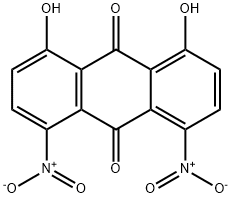
What is 1,8-Dihydroxy-4,5-dinitroanthraquinone?
Chemical properties
brownish-gold solid
The Uses of 1,8-Dihydroxy-4,5-dinitroanthraquinone
1,8-Dihydroxy-4,5-dinitro-9,10-anthracenedione is a NS2B-NS3 protease specific inhibitor that is used for treatment of Dengue and West Nile virus infections.
General Description
Brownish gold solid.
Air & Water Reactions
The neat (pure) material is sensitive to air and may be sensitive to light. . Insoluble in water.
Reactivity Profile
A nitrated alcohol and a ketone. Flammable and/or toxic gases are generated by the combination of alcohols with alkali metals, nitrides, and strong reducing agents. They react with oxoacids and carboxylic acids to form esters plus water. Oxidizing agents convert them to aldehydes or ketones. Alcohols exhibit both weak acid and weak base behavior. They may initiate the polymerization of isocyanates and epoxides. Ketones are reactive with many acids and bases liberating heat and flammable gases (e.g., H2). The amount of heat may be sufficient to start a fire in the unreacted portion of the ketone. Ketones react with reducing agents such as hydrides, alkali metals, and nitrides to produce flammable gas (H2) and heat. Ketones are incompatible with isocyanates, aldehydes, cyanides, peroxides, and anhydrides. They react violently with aldehydes, HNO3, HNO3 + H2O2, and HClO4.
Fire Hazard
Flash point data for 1,8-Dihydroxy-4,5-dinitroanthraquinone are not available, however, 1,8-Dihydroxy-4,5-dinitroanthraquinone is probably combustible.
Synthesis
1,8-Dihydroxy-4,5-dinitroanthraquinone is prepared from 1,8-diphenoxyanthraquinone by nitration followed by alkaline hydrolysis or, alternatively, by nitration of 1,8-dihydroxyanthraquinone in oleum in the presence of boric acid and isolation after the sulfuric acid concentration has been adjusted to 80 – 100 % or, using the same procedure, from 1,8-dimethoxyanthraquinone followed by ether cleavage.
Properties of 1,8-Dihydroxy-4,5-dinitroanthraquinone
| Melting point: | 225 °C (dec.) (lit.) |
| Boiling point: | 467.67°C (rough estimate) |
| Density | 1.4944 (rough estimate) |
| refractive index | 1.5910 (estimate) |
| storage temp. | -20°C Freezer |
| solubility | Dichloromethane (Very Slightly, Heated, Sonicated), DMSO (Slightly) |
| form | Solid |
| pka | 3.45±0.20(Predicted) |
| color | Brown |
| Stability: | Stable. Incompatible with strong oxidizing agents. |
| InChI | InChI=1S/C14H6N2O8/c17-7-3-1-5(15(21)22)9-11(7)14(20)12-8(18)4-2-6(16(23)24)10(12)13(9)19/h1-4,17-18H |
| CAS DataBase Reference | 81-55-0(CAS DataBase Reference) |
| NIST Chemistry Reference | Anthraquinone, 1,8-dihydroxy-4,5-dinitro-,(81-55-0) |
| EPA Substance Registry System | 1,8-Dihydroxy-4,5-dinitroanthraquinone (81-55-0) |
Safety information for 1,8-Dihydroxy-4,5-dinitroanthraquinone
| Signal word | Warning |
| Pictogram(s) |
 Exclamation Mark Irritant GHS07 |
| GHS Hazard Statements |
H315:Skin corrosion/irritation H319:Serious eye damage/eye irritation H335:Specific target organ toxicity, single exposure;Respiratory tract irritation |
| Precautionary Statement Codes |
P261:Avoid breathing dust/fume/gas/mist/vapours/spray. P264:Wash hands thoroughly after handling. P264:Wash skin thouroughly after handling. P271:Use only outdoors or in a well-ventilated area. P280:Wear protective gloves/protective clothing/eye protection/face protection. P302+P352:IF ON SKIN: wash with plenty of soap and water. P305+P351+P338:IF IN EYES: Rinse cautiously with water for several minutes. Remove contact lenses, if present and easy to do. Continuerinsing. |
Computed Descriptors for 1,8-Dihydroxy-4,5-dinitroanthraquinone
| InChIKey | GJCHQJDEYFYWER-UHFFFAOYSA-N |
| SMILES | C1(O)=C2C(C(=O)C3=C(C2=O)C(O)=CC=C3[N+]([O-])=O)=C([N+]([O-])=O)C=C1 |
New Products
Tert-butyl bis(2-chloroethyl)carbamate (S)-3-Aminobutanenitrile hydrochloride N-Boc-D-alaninol N-BOC-D/L-ALANINOL N-octanoyl benzotriazole 4-Hydrazinobenzoic acid 3,4-Dibenzyloxybenzaldehyde 1,1’-CARBONYLDIIMIDAZOLE R-2-BENZYLOXY PROPIONIC ACID 1,1’-CARBONYLDI (1,2-4 TRIAZOLE) 4-HYDROXY BENZYL ALCOHOL 3-NITRO-2-METHYL ANILINE (2-Hydroxyphenyl)acetonitrile 4-Bromopyrazole 5-BROMO-2CYANO PYRIDINE 5,6-Dimethoxyindanone 5-broMo-2-chloro-N-cyclopentylpyriMidin-4-aMine 4-methoxy-3,5-dinitropyridine 2-(Cyanocyclohexyl)acetic acid 2-aminopropyl benzoate hydrochloride 1-(4-(aminomethyl)benzyl)urea hydrochloride tert-butyl 4- (ureidomethyl)benzylcarbamate diethyl 2-(2-((tertbutoxycarbonyl)amino) ethyl)malonate Ethyl-2-chloro((4-methoxyphenyl)hydrazono)acetateRelated products of tetrahydrofuran

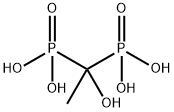

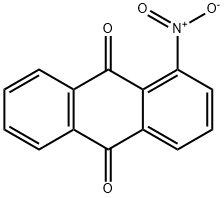
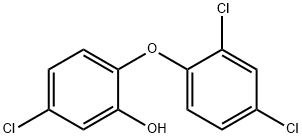

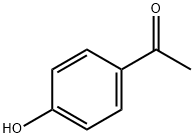
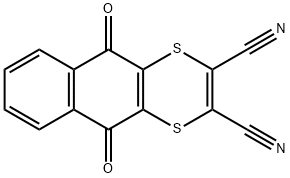
You may like
-
 873-83-6 6-Aminouracil (or) 4-Amino-2,6- dihydroxypyrimidine, (or) 6-Amino2,4-pyrimidinediol 99%View Details
873-83-6 6-Aminouracil (or) 4-Amino-2,6- dihydroxypyrimidine, (or) 6-Amino2,4-pyrimidinediol 99%View Details
873-83-6 -
 55441-95-7 99%View Details
55441-95-7 99%View Details
55441-95-7 -
 N-Vinylformamide 99%View Details
N-Vinylformamide 99%View Details
13162-05-5 -
 Chloro Uracil 1820-81-1 99%View Details
Chloro Uracil 1820-81-1 99%View Details
1820-81-1 -
 207557-35-5 99%View Details
207557-35-5 99%View Details
207557-35-5 -
 2-ethyl-6-methyl-3-hydroxypyridine succinate 99%View Details
2-ethyl-6-methyl-3-hydroxypyridine succinate 99%View Details
127464-43-1 -
 2-ETHYLPYRIDINE 100-71-0 99%View Details
2-ETHYLPYRIDINE 100-71-0 99%View Details
100-71-0 -
 181228-33-1 (S)-Methyl 3-amino-2-((tert-butoxycarbonyl)amino)propanote Hydrochloride (DAP-OMe. HCl) 99%View Details
181228-33-1 (S)-Methyl 3-amino-2-((tert-butoxycarbonyl)amino)propanote Hydrochloride (DAP-OMe. HCl) 99%View Details
181228-33-1